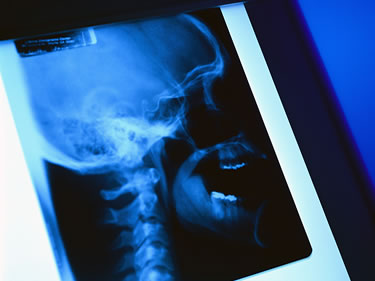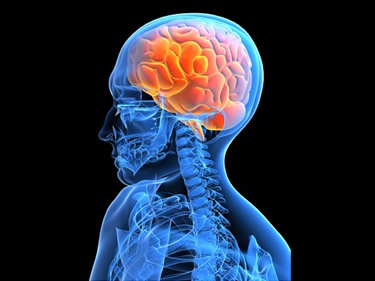In the wake of the suicide of Kosta Karageorge, an Ohio State University football player who allegedly suffered from debilitating concussions, questions once again have been raised about the link between brain injury and mental instability.
A coroner on Monday ordered a special exam to look for signs of traumatic brain injury in Karageorge, a defensive lineman for the powerhouse school, who apparently shot himself to death. The autopsy may shed some light on what happened to that young man, but there are thousands more playing football at various levels, who will soon need answers of their own. Here's what we know about concussions and traumatic brain injury:
TBI is defined as a head injury due to blunt or penetrating trauma. TBIs have often been associated with war wounds, like soldiers in war who are exposed to explosives, and athletes, especially football players and boxers. The term "concussion" refers to a mild TBI — although doctors say they don't consider any brain injury as simply mild.
A decision in August 2013 by the National Football League to settle with 4,500 ex-players over head injuries reflects a growing body of research showing that repeated concussions can cause permanent brain damage
What are the signs of TBI?
Confusion and amnesia are the clinical hallmarks of the condition. Multiple concussions can lead to other health problems like post-concussion syndrome, which involves headaches, dizziness and difficulty concentrating. Epilepsy, vertigo, personality changes, Parkinson's disease and dementia have also been linked to repeat concussions in boxers and football players.
A degenerative disease tied to repeated jolts to the brain — chronic traumatic encephalopathy or CTE — has symptoms ranging from dementia to altered behavior, and perhaps to ALS or Lou Gehrig's disease. Sufferers of CTE can have difficulty maintaining relationships and those with advanced disease can spiral into depression and substance abuse — and sometimes end up taking their own lives, said Dr. Julian Bailes, chairman of the department of neurosurgery at the NorthShore University HealthSystem and co-director of the NorthShore Neurological Institute.
What happens during a concussion?
Can TBI be treated?
UCLA's Brain Injury Research Center said it identifies and removes severely damaged brain tissues, followed by neurointensive care of the patient. But TBI is difficult to treat due to the large variety of possible injury patterns and the brain's complexity, the center noted.
It can take days or weeks for the brain to heal. Snyderman said people with concussions can fully recover but rest was key since even minor jolts can damage the brain after an injury. The danger is a suffering a second concussion, a rare complication known as "second impact syndrome" or brain swelling - particularly in children though this risk has led to the guidelines that address when an athlete should return to play.
Who suffers from TBI?
A new study released in September found an increase of visits to emergency rooms for TBIs by 29 percent over the last four years — with the biggest jumps coming among toddlers and seniors.
And some high school football players exhibit measurable brain changes after a single season of play even without suffering a concussion, according to a new study presented Monday at the annual meeting of the Radiological Society of North America.
In the professional sports arena, the suicides of former NFL players Junior Seau, Ray Easterling, Jovan Belcher and Dave Duerson helped bring attention to the issue.


